The World of Tiers and Beyond: Philip Jose Farmer, Part I
The World of Tiers, Volumes 1 and 2 (Science Fiction Book Club, November 1981). Covers by Boris Vallejo
Philip Jose Farmer (1918 – 2009). Farmer was a versatile writer. I discovered him from his Sword & Planet work with his World of Tiers series, but went on to read a lot of other books by him, including some pastiches he wrote in ERB’s universe. I’ll be discussing him here in two posts.
My introduction to Farmer came through the Science Fiction Book Club. They offered the first five books in The World of Tiers in a two-volume set, and I still have mine (shown here, with covers by Boris Vallejo.) I read them straight through and looked for more. There weren’t any. Not at the time. Years later, another book (More than Fire) was published, but I haven’t read it. I did read a connected book called Red Orc’s Rage.
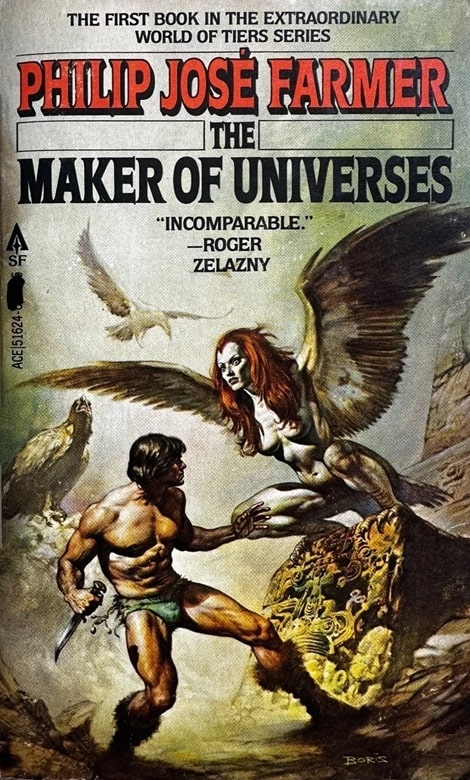 |
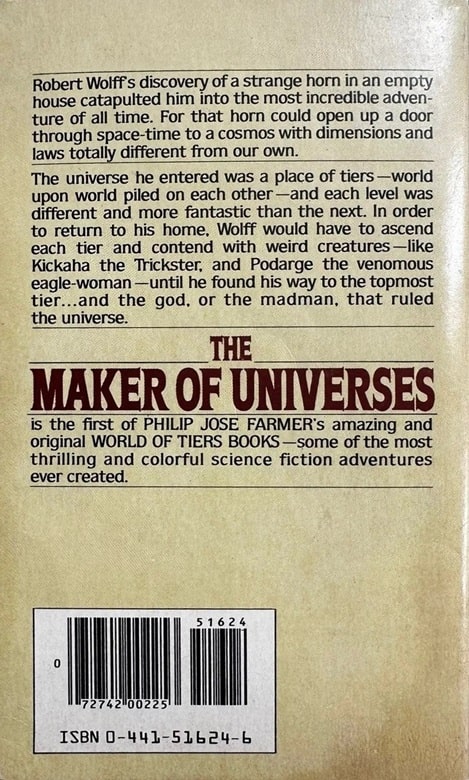 |
The Maker of Universes (Ace Books, June 1977). Cover by Boris Vallejo
Here’s the series list.
1.The Maker of Universes (1965)
2. The Gates of Creation (1966)
3. A Private Cosmos (1968)
4. Behind the Walls of Terra (1970)
5. The Lavalite World (1977)
6. Red Orc’s Rage (1991)
7. More Than Fire (1993)
The World of Tiers series takes the basic Sword & Planet concept and mixes it with other forms of heroic fantasy. It’s all entertaining. The operative word is creativity.
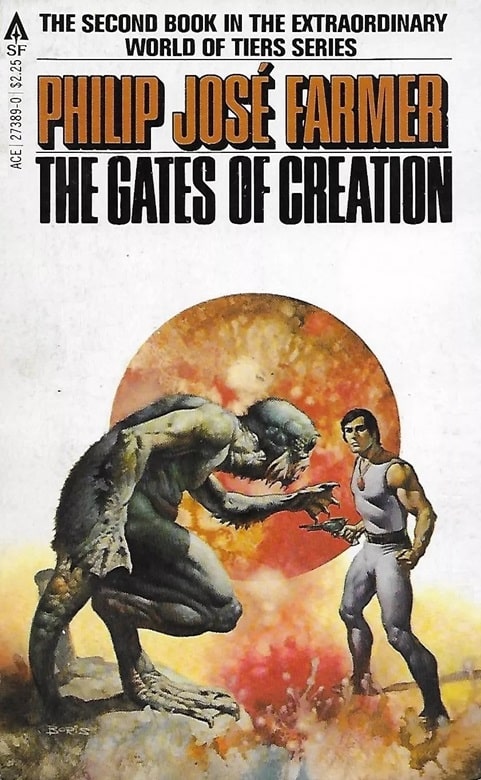 |
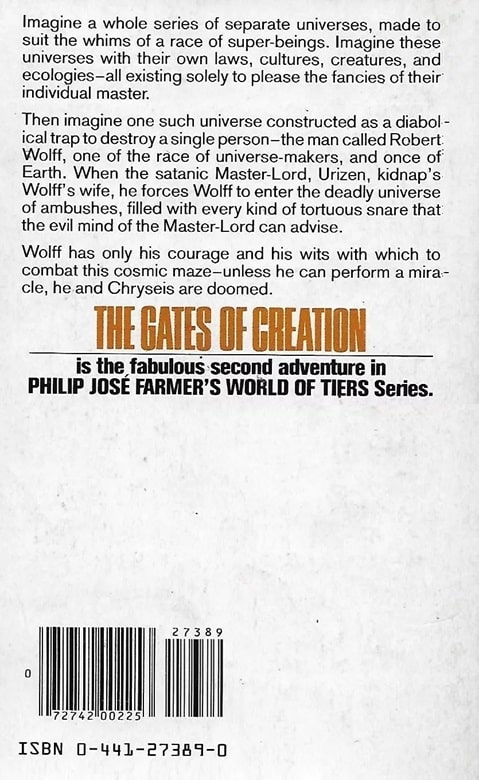 |
The Gates of Creation (Ace Books, August 1977). Cover by Boris Vallejo
Farmer was one of our most imaginative writers and I would have loved to chat with him about it. A group of beings generally called “Lords” have a technology that allows them to create pocket universes and manipulate the physical rules of those universes. The universes are connected by gates that allow travel between them.
The Lords appear to be human but their technology largely makes them immortal, and they only know how to use the technology, not to create it. They use it to play games with their creations and to compete with each other. (One particular pocket universe is built in tiers, like a wedding cake, thus providing the name for the entire series.)
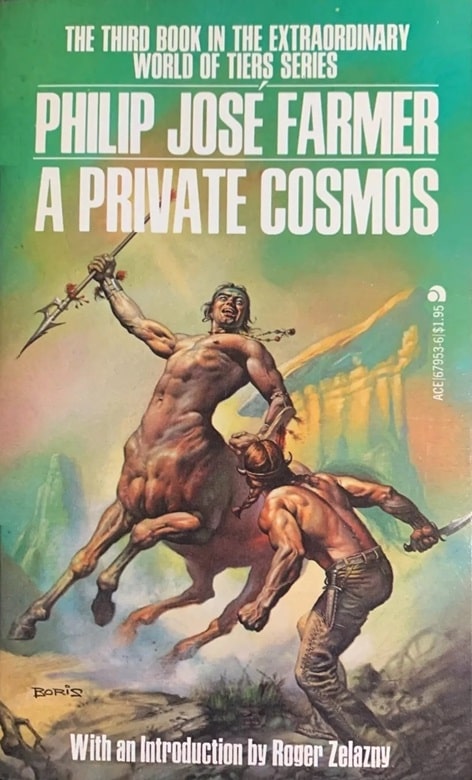 |
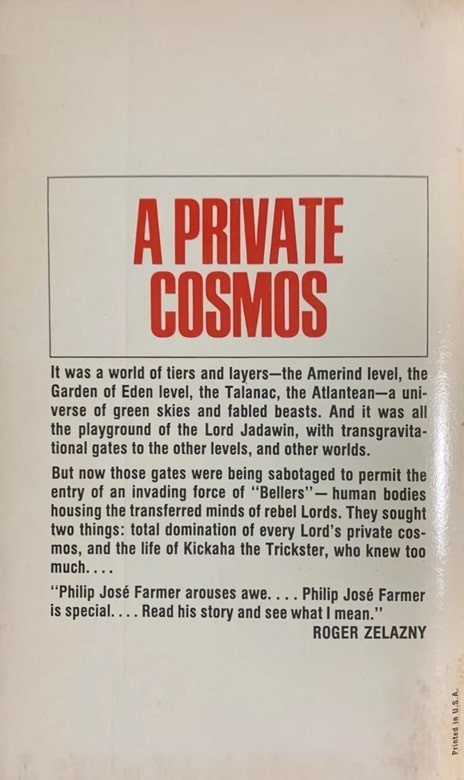 |
A Private Cosmos (Ace Books, October 1977). Cover by Boris Vallejo
The first earthman to discover the World of Tiers is Robert Wolff. He’s a fairly old man when the series begins but grows younger as he dwells in the pocket worlds. He has a secret, which I won’t reveal here. (You’ll have to read the books to find out.)
Wolff meets another Earthman who is already living in the World of Tiers, an American soldier from WWII named Paul Janus Finnegan (same initials as Farmer himself), who mostly lives under the name Kickaha.
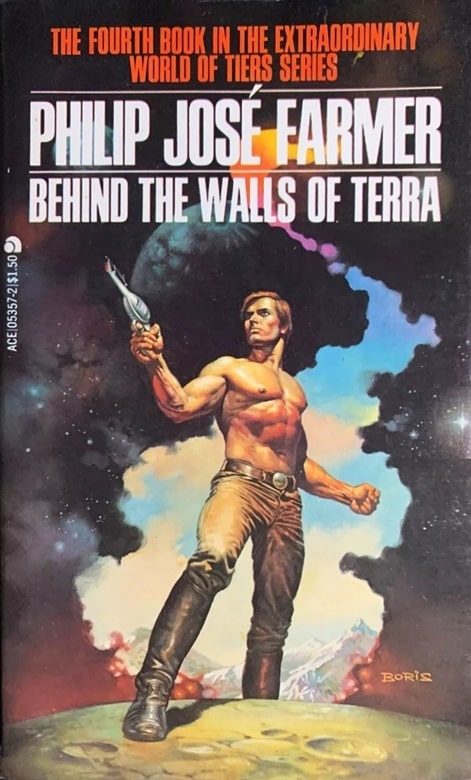 |
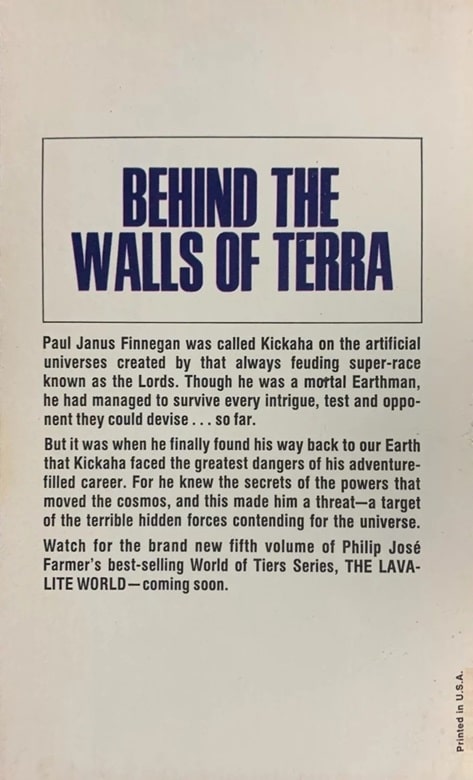 |
Behind the Walls of Terra (Ace Books, 1977). Cover by Boris Vallejo
The first two books primarily feature Wolff and the next four feature Kickaha. I’ve ordered More Than Fire but haven’t had a chance to read it yet. Red Orc’s Rage is connected to the series but there’s a major difference.
Red Orc’s Rage (cover by Doug Beekman) is an odd book. It’s listed as book 6 in The World of Tiers series but the relationship to the other books is convoluted.
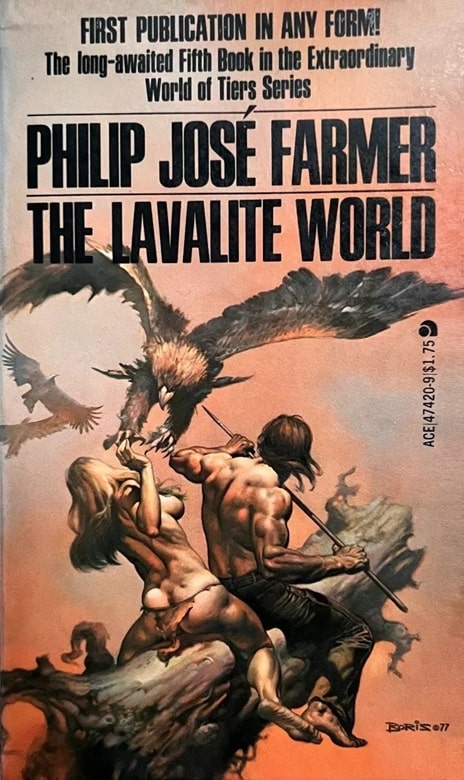 |
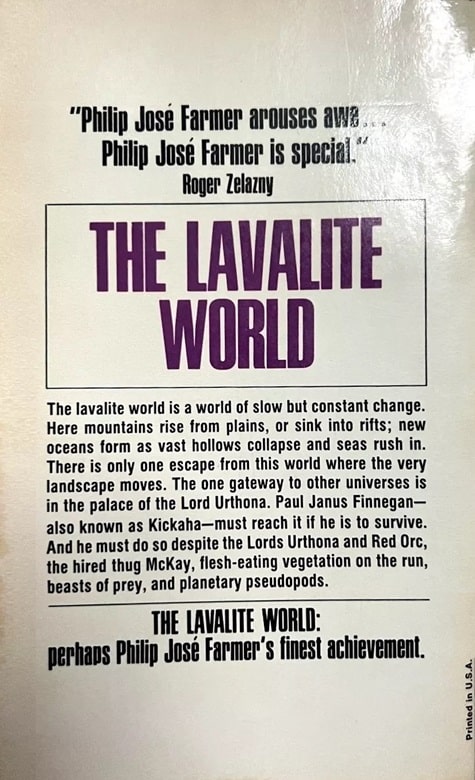 |
The Lavalite World (Ace Books, December 1977). Cover by Boris Vallejo
In a dedication to the work, Farmer explains that a psychiatrist by the name of A. James Giannani wrote to him in 1978 about developing a psychiatric therapy called Tiersian Therapy.
In this process, Dr. Giannani had adolescent patients read Farmer’s World of Tiers series (five books at the time) and then try to develop a mental connection to one of the characters and the settings. This would create a shared fantasy world between them, one which the therapists could also share in, thus creating a kind of common language for communication.
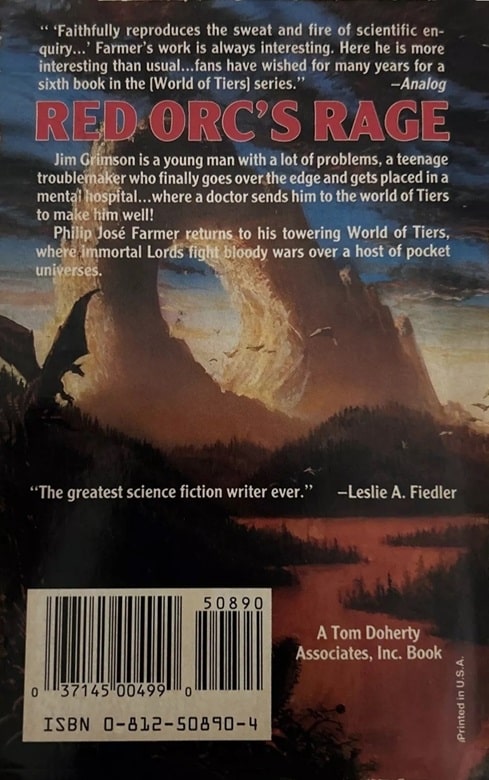 |
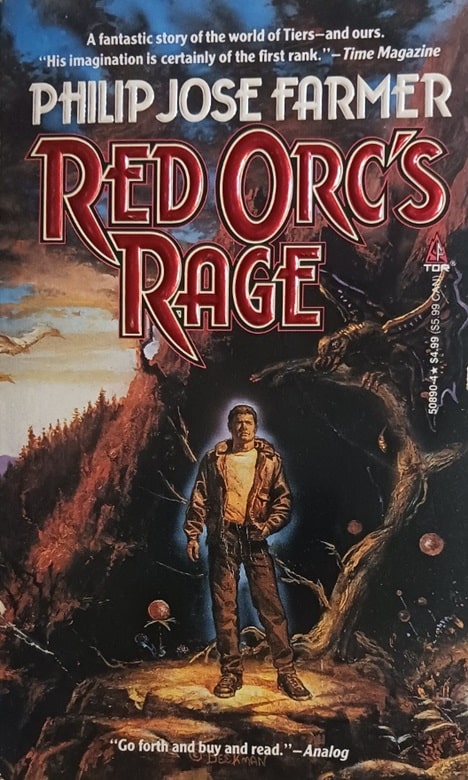 |
Red Orc’s Rage (Tor paperback reprint, December 1992). Cover by Doug Beekman
Farmer wrote this book about a fictionalized young man named Jim Grimson, who undergoes this therapy and becomes the character of Red Orc. It’s not completely clear through the work whether Jim’s experiences are real or delusional. I’m not sure it matters. Although it’s really an interesting idea, I didn’t think this book was as good as the first five.
As an experimental psychologist by training, I’m skeptical that this sort of therapy has wide ranging applications. It’s never become a mainstream therapy. I don’t even know if anyone still practices it. It might be an interesting process for self-discovery for psychiatric clients but the treatment uses would be limited.
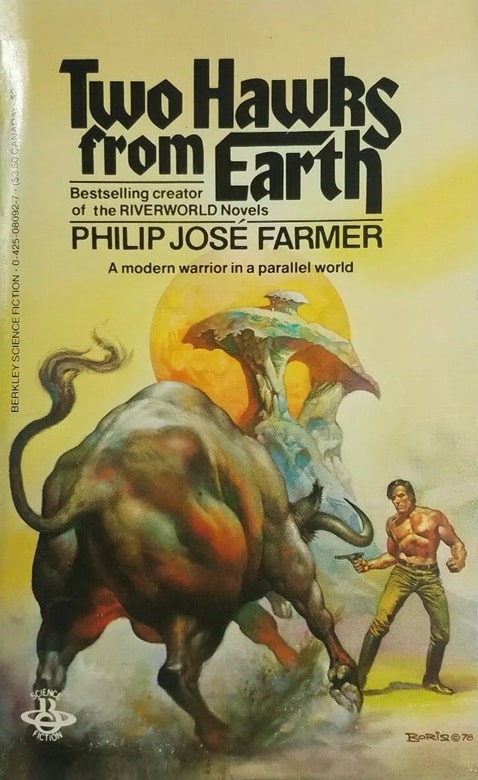 |
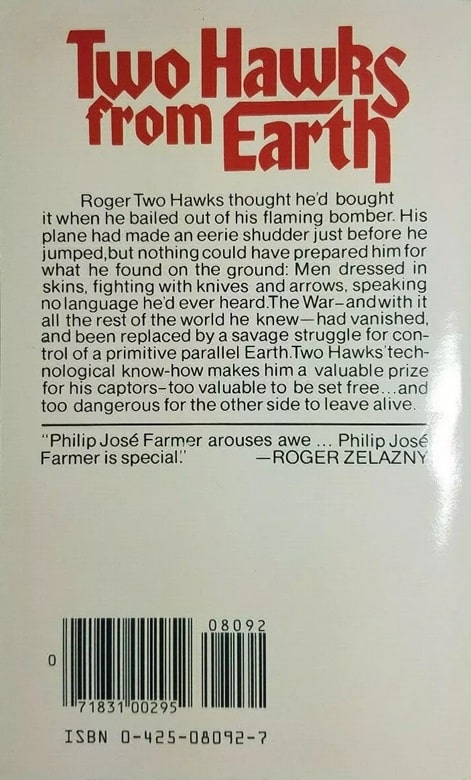 |
Two Hawks from Earth (Ace Books, May 1979). Cover by Boris Vallejo
Although not officially a World of Tiers book, Farmer also published Two Hawks From Earth, which felt much like a Tiers series book when I was reading it. An American bomber pilot in WWII named Roger Two Hawks is shot down over Germany and parachutes to safety. However, he lands not on Earth, but on an alternate world — Earth Two, which is also a world at war. This world is at an early industrial stage so there are guns instead of swords, and Two Hawks technical knowledge makes him a valuable asset that both sides want to claim.
The book was first published in 1966 and then again in 1971 as The Gate of Time. Farmer didn’t like that title, nor some of the changes the publisher made, and was happy to see this rereleased with his original title and substantially expanded in 1979. It looks like this story was conceptualized around the same time that Farmer was working on his Tiers stories so the similarities make sense.
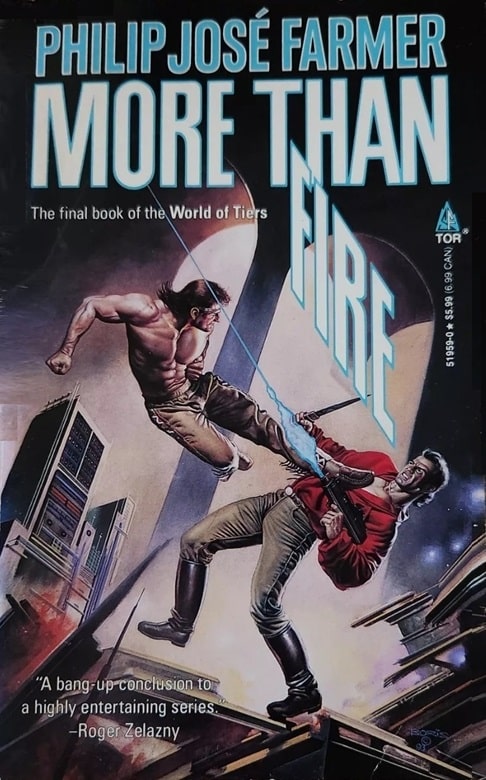 |
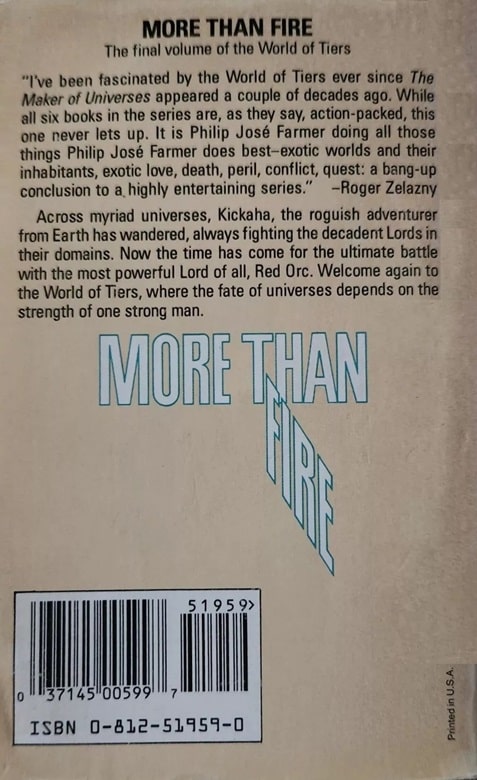 |
More Than Fire (Tor Books paperback reprint, February 1995). Cover by Boris Vallejo
Roger Two Hawks is very similar to Kickaha from the Tiers novels, and the whole “gate” thing is similar. The S&P elements are more minimal here than in the Tiers series; it’s an alternate history. But it’s a very good read. Boris Vallejo did this cover as well.
A bonus pic for today. I just got in a copy of More Than Fire, listed as the “Final book in The World of Tiers.” This is TOR, 1993 (paperback released in 1995), with a cover by Boris.
Hadon of Ancient Opar and Flight to Opar (DAW, April 1974
and March 1982). Covers by Roy Krenkel and Ken Kelly
Farmer also wrote pastiches and “Biographies” of fictional characters. These mostly tied in to Burroughs and Tarzan, or to the character of Doc Savage. The first two I read were his two Opar books from DAW. Opar, of course, was introduced in ERB’s Tarzan series as an ancient lost city in Africa. Farmer reenvisioned the city in its heyday, 10,000 years before the present.
The books were called Hadon of Ancient Opar (1974) and Flight to Opar (1976). Both were outstanding works, among the top ten pastiches that I’ve read from any writer.
Hadon had a cover by the great Roy Krenkel, as well as some interior Krenkel illustrations. Flight had a great Ken Kelly cover with some awesome Krenkel illos inside.
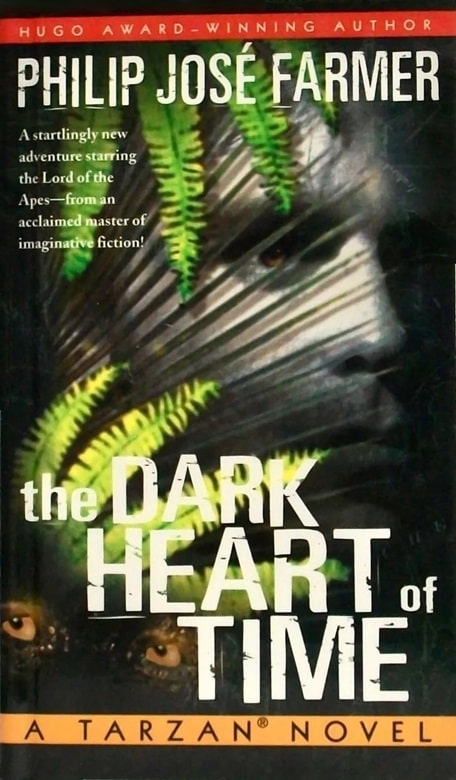 |
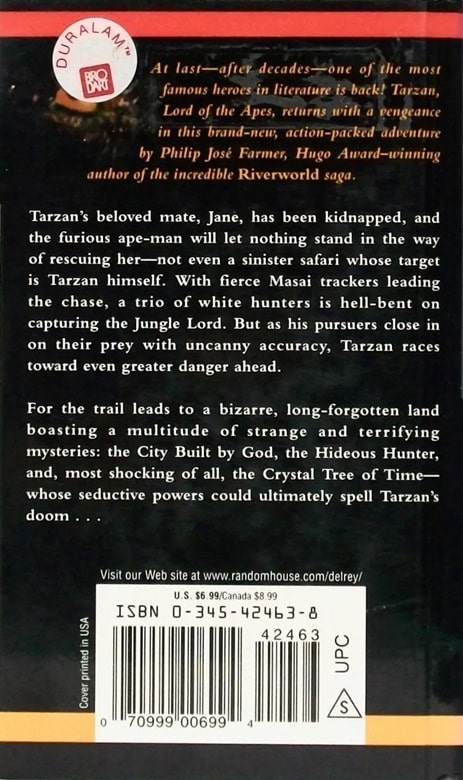 |
Tarzan: The Dark Heart of Time (Del Rey, June 1999). Cover by Heather Kern
Years later, however, in 1999, Farmer published Tarzan: The Dark Heart of Time, from Del Rey (cover by Heather Kern). I’m afraid I didn’t care as much for this one. Farmer was around eighty at this time and I suspect the quality of his work had begun to decline. I don’t know how his health was but he died 10 years later.
Farmer first delved into the pastiche waters for ERB and Doc Savage with a bizarre novel called A Feast Unknown, originally published in 1969 and rereleased in several different forms. My copy (shown below) is from Playboy Press 1980, cover by Jordi Penalva. The book features Lord Grandrith and Doc Caliban, who are thinly veiled versions of Lord Greystoke (Tarzan) and Doc Savage.
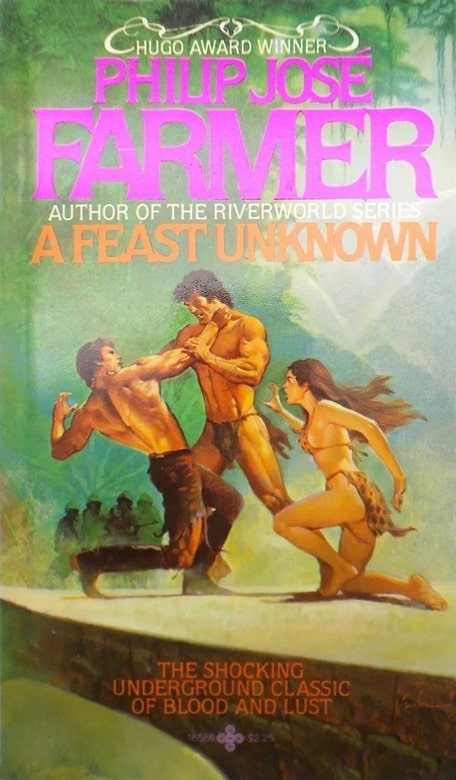 |
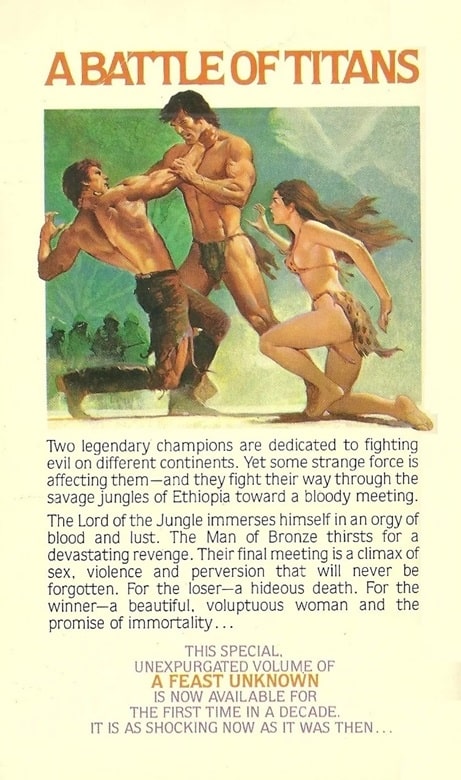 |
A Feast Unknown (Playboy Press, January 1980). Cover by Jordi Penalva
This appears to have been Farmer’s attempt to mix pulp fiction with erotica, and he likely meant much of it to be a parody. One completely over the top scene has Grandrith and Caliban dueling with their penises and then tearing off each other’s genitalia in a brutal battle to the death.
Farmer produced two sequels to A Feast Unknown, Lord of the Trees (Grandrith/Tarzan) and The Mad Goblin (Caliban/Savage). Note that, in Farmer’s world, these two are immortal and both survive having their genitalia tore off. In fact, the genitalia regenerate. I’ve never read these books. Honestly, A Feast Unknown was enough for me.
Read the second installment in this series, Tarzan and Beyond: Philip Jose Farmer, Part II.
Charles Gramlich administers The Swords & Planet League group on Facebook, where this post first appeared. His last article for Black Gate was an obituary for Janet Morris.
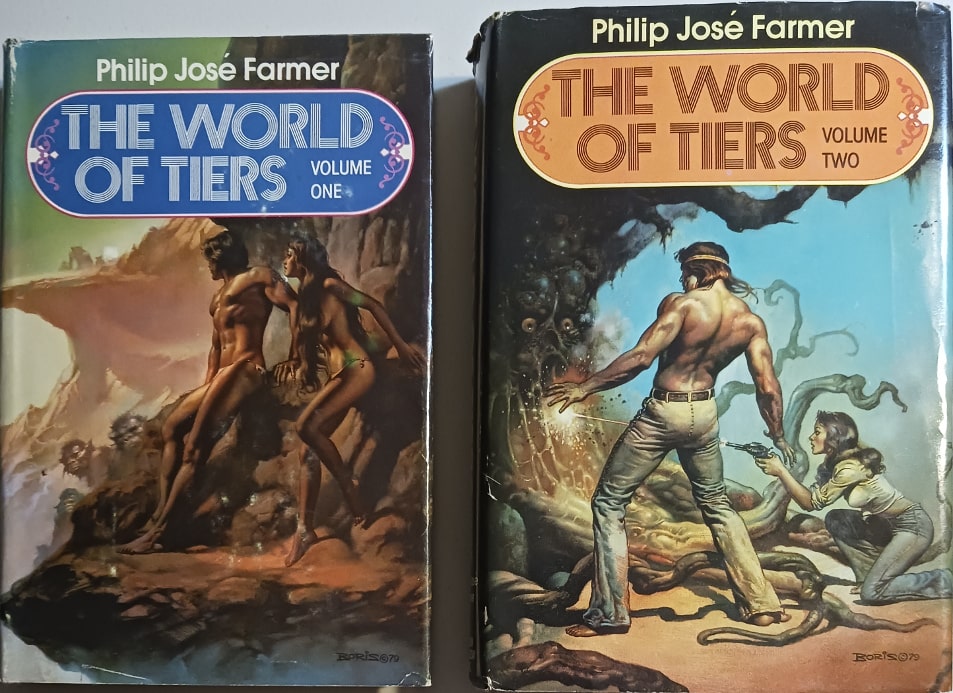
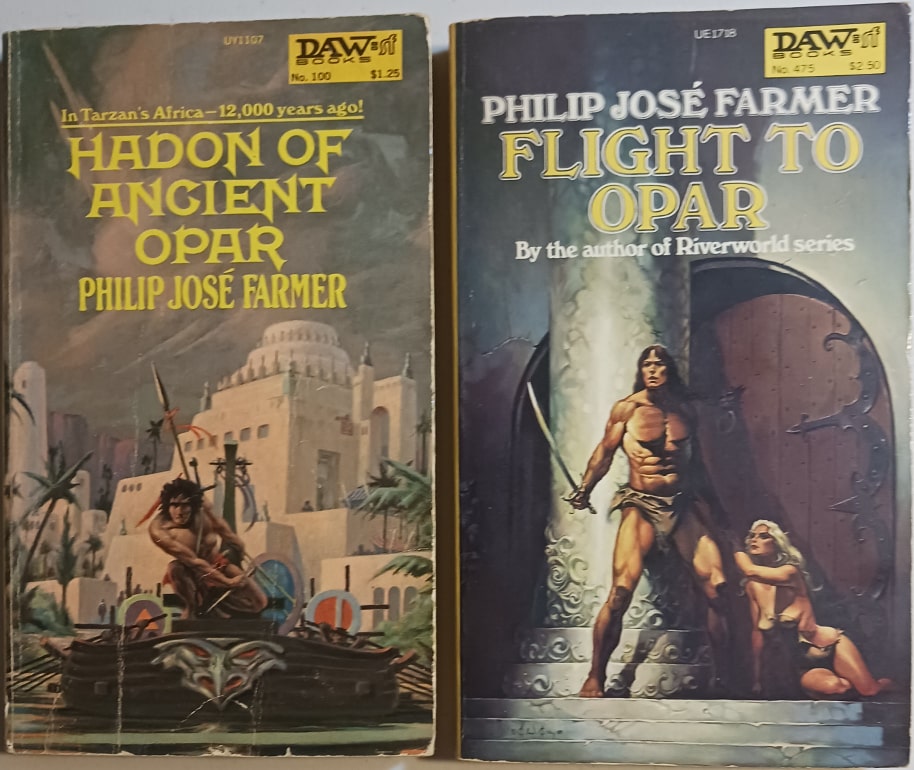
Farmer seems to like to do the combination of European first names with Native American phrasal names translated into English as last names; his early The Stone God Awakens has Ulysses Singing Bear.
He clearly has a fascination with native American characters and culture.
I knew about World of Tiers from its listing in Appendix N in the original Dungeon Master’s Guide, but I didn’t get a chance to read them until sometime after college when I snagged used copies from Uncle Hugo’s in Minneapolis — the local public library when I was growing up didn’t have them on the shelves. I also never really got into any of the Wold-Newton stuff.
Growing up, my Farmer reading was mostly the Riverworld books (I like the first … four?, I think, but wasn’t happy with some of the revelations in the final book or two) and Dark is the Sun (which feels weirdly like a Gamma World novel moreso than anything else).
the wold-Newton stuff is interesting but not my favorite Farmer work. I’d really rather have seen more completely original stuff than this kind of re-envisioning of other writers’ famous creations.
I was a big Farmer fan. I wasn’t familiar with the genre Sword and Planet at the time; all I know was that his books were the first I read that added a large dose of action to science fiction. I had the privilege to be invited to contribute to a Farmer anthology a few years ago, but I eventually bowed out because I wanted to write something based on the World of Tiers series but it was already taken. I need to revisit these books. They were fun.
I bought Maker of Universes when I was ten solely based on that cover… then got it taken away by my mother. I stole it back from her the next day, and read it cover to cover in a day. It was my introduction to Farmer. Later in college, I found his phone number in the “hometown” phone directory section at the university library (which had several hundred local directories for home-sick students) and called him. As I recall, he was very gracious, and now I realize he took my call and spoke to me for several minutes as a distraction from putting more words on a page, something I can identify with completely 🙂
Wow, very cool that you actually spoke to him. I’d probably never have had the guts to make that call.
Farmer wasn’t a great prose stylist, but he had other virtues. He was a great at ideas. One of the best in SF a literature of ideas. While his series tended to taper out as they went on they have great conciets. World of Tiers which is probably the strongest you talk about. Riverworld lost me at some point but I really liked the first two books. I was real into the Wold Newton stuff for a while.
His prose generally isn’t artistic but fits the story. I really liked his Hadon of Opar books too
I really enjoyed the World of Tiers books (original 5, SFBC 2-volume omnibus edition). Alas, I loaned it to a friend (along with Jack Chalker’s Four Lords of the Diamond omnibus), and they were lost in a house fire.
I still have my sf Omnibus books, for this and for the Zelazny Amber series